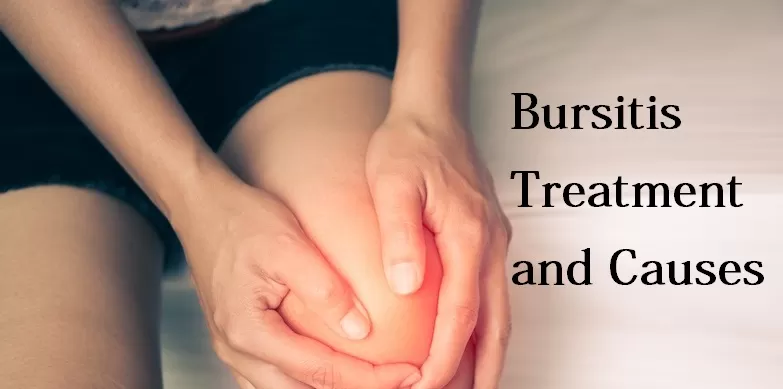Bursitis is a condition that affects the joints, causing significant discomfort. It involves the inflammation of the bursae, which are fluid-filled sacs that cushion the bones, muscles, and tendons around the joints. When these bursae become inflamed, it leads to pain and difficulty moving the affected joint. Bursitis commonly affects areas like the shoulder, elbow, hips, thighs, and knees. It usually occurs in joints that experience frequent movement or pressure. Heavy lifting, repetitive motions, or straining the joints can contribute to bursitis. The risk of developing this condition increases with age.
Symptoms of Bursitis
If you experience bursitis, some common symptoms include:
- Swelling and Redness: The affected joint may become swollen and appear red.
- Pain and Tenderness: You may feel sharp pain, especially when moving the affected joint.
- Reduced Mobility: The inflamed joint may become stiff, making movement difficult.
- Bruising or Rash: In some cases, there may be visible bruising or a rash on the skin surrounding the joint.
Managing Bursitis
The majority of cases of bursitis can be managed without surgery. A study published by the American Academy of Orthopaedic Surgeons (2011) suggests that common types of bursitis include prepatellar, olecranon, trochanteric, and retrocalcaneal bursitis. The primary approach to treatment usually involves rest, ice therapy, and anti-inflammatory medications. In more severe cases, such as septic bursitis, oral antibiotics may be needed.
Steps for Relieving Bursitis
To ease the discomfort of bursitis, follow these guidelines:
- Rest the Affected Joint: Avoid putting unnecessary strain on the inflamed joint.
- Limit Physical Activity: Refrain from any activities that may worsen the condition.
- Medical Treatment: Visit a healthcare provider for professional treatment. They will likely recommend pain relievers and other medications to reduce inflammation. In some cases, physical therapy might be necessary.
- Ice Therapy: Applying ice to the inflamed area can help reduce swelling and ease the pain.
Preventing Bursitis
Preventing bursitis involves protecting your joints from unnecessary stress. Here are a few important steps to minimize your risk:
- Correct Lifting Techniques: When lifting heavy items, make sure to bend your knees to avoid placing strain on your joints. This will help protect the bursae around your knees and other joints.
- Take Regular Breaks: If you are engaged in strenuous activities or repetitive motions, make sure to take frequent breaks. This will allow your joints to rest and recover.
- Strengthen Your Muscles: Incorporating regular muscle-strengthening exercises can help improve the stability of your joints. It is essential to do these exercises under the guidance of a professional to avoid further injury.
- Warm-Up and Stretching: Before engaging in physical activities, warm-up your muscles and stretch them properly. This can prevent wear and tear on your joints.
- Maintain Healthy Weight: Excess weight puts additional pressure on your joints, so it’s crucial to maintain a healthy weight to reduce strain on your bursae.
Conclusion
Bursitis can be a painful and limiting condition, but with the right care and attention, it can be managed effectively. A combination of rest, medical treatment, and preventive measures will help relieve pain and prevent future flare-ups. Maintaining proper posture, regular exercise, and healthy habits can significantly reduce your chances of developing bursitis.
Important Note: Before making any significant changes to your health, it is always advisable to consult with your doctor or healthcare professional. They can offer personalized guidance based on your medical history and current health condition.
For any health-related concerns, please contact us at +91-9058577992 to receive a free consultation from our experienced doctors. Your health is our top priority. Thank you.
